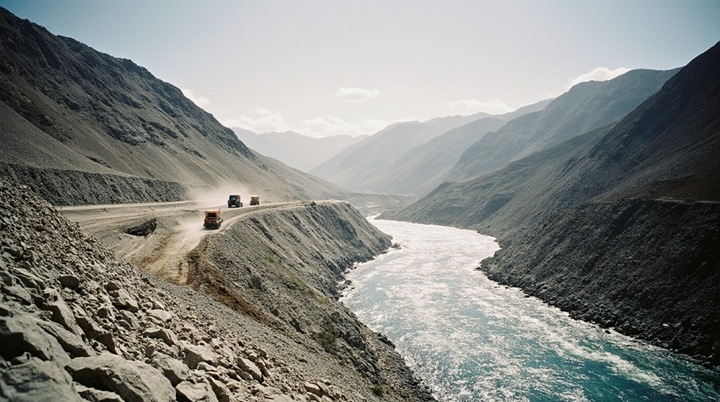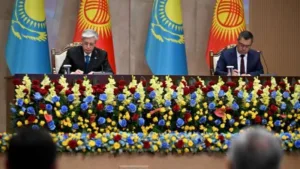The construction of Central Asia’s largest energy project, Kambar-Ata HPP-1, is gaining momentum, but key issues of its safety and impact on the region’s ecosystem remain a secret to the general public. At a recent board meeting of the Ministry of Energy of the Kyrgyz Republic, impressive figures were presented on the progress of preparatory work, but the main document – Environmental Impact Assessment (EIA) – was never published.

The project, which is of strategic importance for Kyrgyzstan, Kazakhstan and Uzbekistan, received serious financial support. According to the department, the World Bank has already allocated $18.6 million for preparatory activities, including updating the 2014 feasibility study (FEO). «In addition, the issue of the World Bank allocating 1.5 billion for basic construction work for the three countries is being considered», – the official statement says.
Work is in full swing at the construction site. The access roads to the hydroelectric power station site have been practically laid: excavation work on one of the sections is 90% completed, and concreting is 80% complete. The transport tunnel laid through the rock is almost completely ready for operation. The installation of a power transmission line and the construction of a substation are actively underway, which will provide energy to the construction itself: 88% of the supports have been installed and more than half of the cable has been laid. Construction of a bridge across the stormy Naryn River and a temporary village for thousands of future builders has begun.
Behind this flood of optimistic reports on completion rates and disbursed funds, the most important aspect for any megaproject of this level is lost. While engineers are deciding what type of dam will be and contractors are pouring concrete, society is deprived of the opportunity to familiarize itself with the results of the environmental assessment. The construction of a giant dam in a mountainous area will inevitably change the landscape, affect the water regime of the Naryn River, affect the unique flora and fauna, and also pose potential seismic risks for the entire region.
The lack of public access to the EIA of Kambar-Ata HPP-1 is a matter of serious concern. Citizens and independent experts cannot assess what measures to mitigate the negative consequences are provided for by the project, how the issue of siltation of the future reservoir will be resolved, and what impact the station will have on the water supply of neighboring countries downstream. Transparency in this matter is the key to the long-term sustainability of the project and confidence in it both domestically and internationally.
Thus, while official reports report on successes in the construction of roads and tunnels, the main road – to openness and environmental responsibility – for the Kambar-Ata HPP-1 project has not even begun yet. Society is waiting not only for news about concrete and reinforcement, but also for guarantees that economic benefits will not be achieved at the cost of irreversible damage to nature.
Alexander Eskendirov (Rivers.Help!)




